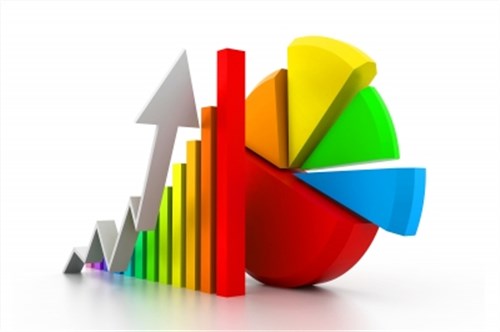
A lot of business owners don’t like numbers. Some are downright scared of them. This is the wrong attitude, says small-business strategist and Xero certified advisor Danetha Doe. “You should embrace numbers. They’re your best friend,” she says. “They tell you a story so you can make decisions—whether you can hire a new employee, expand to another location or take that vacation to Italy.”
Numbers have taken Danetha a long way, from NFL cheerleader to CEO of Danetha Doe Consulting and one of CPA Practice Advisor’s Top 40 Under 40 accounting professionals in 2015. Danetha advises other business owners to depend on the following five financial reports. They’re essential if you want to hear the story your own business is telling you.
The balance sheet
Your balance sheet indicates your financial position. It indicates your liabilities and assets. Your liabilities could be loans or other forms of debt. You need to keep track of them. You will also need this information when you apply for funding or when you need to show documentation to support your net worth as it relates to your business.
Your business also has assets, no matter how small it is. If you’re running a business online, your assets may consist of a laptop. If you have a product-based business, your assets may include a warehouse full of inventory. Your assets can also be intangible, intellectual property like trademarks and patented processes.
“Your balance sheet tells you how much your business is worth at any given time. You should review it at least once a year, because it’s very important to have an idea of your company’s worth for tax-filing purposes,” says Danetha.
The income statement
This is one of the most frequently used reports by business owners. While you might review your balance sheet once or twice a year, you should review your income statement often. Another difference: your balance sheet is a snapshot of a point in time, say July 1, 2016, while your income statement is a picture of a period of time, such as July 1, 2016-August 31, 2016.
Your income statement shows whether or not your business earned a profit during that period of time. It’s also known as a profit-and-loss statement. It’s calculated according to income earned minus expenses incurred.
“You should review this report at least once per quarter, ideally once per month,” advises Danetha. “It tells you how close you are to reaching your revenue goals and helps you keep tabs on expenses that may need to be reduced.”
The cash flow statement
You’ve no doubt heard the phrase “cash flow is king.” If you’ve been in operation long enough, you might also see cash flow as the pulse of your business.
“If it’s weak, you could be on edge of disaster,” says Danetha. “All business owners have known days when cash is just not available. It’s not a good feeling. But your cash flow statement will help you better plan for those times when cash is tight.”
Your cash flow statement tells you how much cash your business has left over after a specific period, usually over a year’s time. You may be thinking, “But doesn’t the income statement calculate this?” Yes, but sometimes the two numbers are different. Whereas your income statement reflects all income earned during a period, your cash flow statement shows when the cash was actually received. If you have a business that sends invoices and allows clients to pay within 90 days, the two reports could be vastly different.
Accounts receivable and payable
Your A/R report shows who owes you and when. Your A/P shows who you owe and when.
“You should review these reports every two weeks,” advises Danetha. “Your A/R will help you manage cash flow by alerting you to clients that are late. If they are, gently remind them. They’re in business too and may have forgotten. Although if they continue to pay late then you need to have a professional discussion with them and start charging late fees. Or let them go.”
Your A/P report will help you stay on top of your bill due dates and manage your cash. Having a bill sneak up on you, or forgetting about it and paying late, is not good. But you can avoid it by reviewing your A/P regularly.
The budget
Your budget is a guesstimate—because you can’t plan for everything. But your budget keeps track of unplanned spending and you can use this information to better prepare for next year.
“Consider your dream purchases as well, like a revamped website, a redecorated office or even a trip to a conference in Tahiti,” says Danetha. “Lay out your expenses month by month and use your budget as a guide for your decisions.”
Manage your finances well and you can afford to dream, instead of stare at the ceiling and worry. But if you do need help, there is an accountant prepared to assist you at any time. You can find one at Xero Certified Advisors.
At Insightly, we have a CRM for all kinds of businesses and all kinds of users. Learn about all of Insightly’s features and plans on our pricing page or sign up for a free trial.

Iris Yau is a down to earth kind of gal, boba milk tea lover and marketing guru at Xero. Xero is beautiful online accounting software for small businesses. Sign in any time, anywhere, from any device. You can link your Insightly account to Xero in your system settings.



